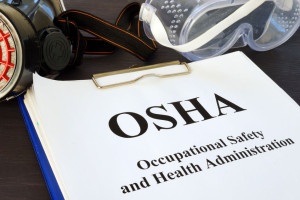Businesses have a responsibility to take care of their employees. Not only is this a smart business practice to protect your bottom line and to protect your business reputation, it’s federally mandated. Most  private sector employers and their workers in the United States must adhere to OSHA safety programs to protect employees.
private sector employers and their workers in the United States must adhere to OSHA safety programs to protect employees.
The Occupational Safety and Health Administration Act details specific responsibilities of employers regarding ensuring a safe and healthy workspace for their teams, which includes, but is not limited to:
- Provide a workplace free from serious recognized hazards and comply with standards, rules and regulations issued under the OSHA Act.
- Examine workplace conditions to make sure they conform to applicable OSHA standards.
- Make sure employees have and use safe tools and equipment and properly maintain this equipment.
- Use color codes, posters, labels or signs to warn employees of potential hazards.
- Establish or update operating procedures and communicate them so that employees follow safety and health requirements.
- Provide safety training in a language and vocabulary workers can understand.
This federal law also gives employees the right to call their local OSHA office and make a complaint or lodge a concern regarding their place of employment. Because of the importance of worker safety, OSHA takes workplace violations against regulations seriously. Inspections that reveal non-compliance can mean fines or costly renovations for the business.
The official OSHA website notes, “OSHA encourages all employers to adopt a safety and health program. Safety and health programs, known by a variety of names, are universal interventions that can substantially reduce the number and severity of workplace injuries and alleviate the associated financial burdens on U.S. workplaces. Most successful safety and health programs are based on a common set of key elements. These include management leadership, worker participation, and a systematic approach to finding and fixing hazards.” All that to say – smart planning can protect your business.
Prevention and preparation are the key to avoiding costly and dangerous accidents or workplace problems. Our team can help you find solutions for your OSHA compliance needs. Give us a call today.

 zone or an area more prone to earthquakes? Just like homeowners’ insurance, business property and commercial insurance may vary based on location.
zone or an area more prone to earthquakes? Just like homeowners’ insurance, business property and commercial insurance may vary based on location.